Resources - Architectural and Monumental Heraldry
Kevin Greaves, Aug 2006
Most of us when we think of heraldry tend to think of its less sizeable and permanent forms - paintings, bookplates, banners and standards, images on china and glassware - that sort of thing. But there is another form that is equally important - and certainly more permanent. I am talking of course about architectural heraldry, the arms that are included in buildings. The use of arms in buildings goes back almost to the dawn of heraldry, first to mark the tombs of famous men and shortly thereafter to indicate jurisdiction or the ownership of property. Since we are a relatively young nation, Canada cannot boast the enormous wealth of monumental and architectural heraldry possessed by many European countries. However, there is more here than many people realise and it forms a part of our heritage that is worth preserving.
From the scores of images I received as a result of a request in our heraldic forum, I have selected for this article a few examples from the city of Toronto. Toronto is rich in this form of armory, so I can only mention a fraction of the photos that were so kindly sent. I confess the selections were made from those I liked best.
The first couple represent the type of heraldic art that is probably most familiar - the monochrome relief carving done in stone on the walls of public or government buildings. Figure 1 is a rather fine version of the arms of the Sovereign in right of Canada, carved in high relief on the façade of the Bank of Canada building at University and Queen Streets. Note that the artist, faced with a horizontal rectangular surface, has beautifully adapted the supporters to fit the area.
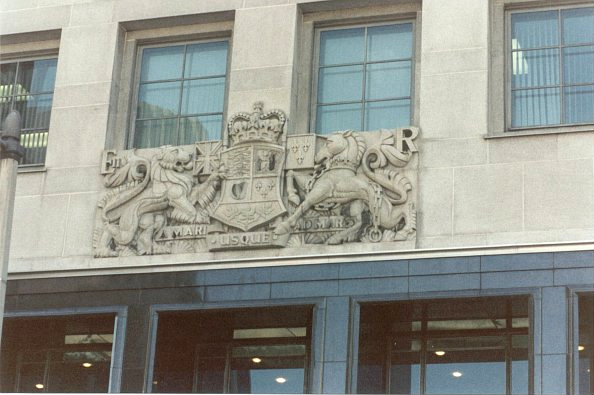 |
Figure 1- Bank of Canada (Photo, Jonathan Good) |
|
Figure 2 is of the same general type, save that the carving is in bas-relief. This is on the side of the old Dominion Public Building (now the Canada Pension Plan building) and shows the floral emblems of Ireland, England, Scotland and France flanking the maple leaf.
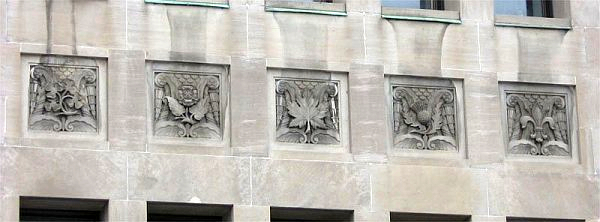 |
Figure 2 - Dominion Public Building (Photo, Graydon Bennett) |
|
Another location for this sort of carving is the archway over the entrance to a building. Figure 3 exhibits a fine example of this, over the main door of University College of the University of Toronto. In the centre is a shield depicting the arms of the college impaled with those of the university. On either side are the letters U and C, the one surmounted with the crest of the university, the other with that of the college. The impaled arms are the same as those shown in figure 10, and it is interesting to compare the two artistic treatments.
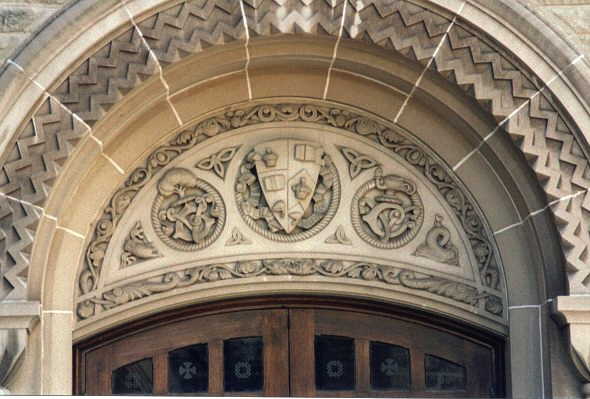 |
Figure 3 - University College Entrance (Photo, Jonathan Good) |
|
A less common means of displaying arms is to sculpt them in the round. Shown in Figure 4 is the crest of Vincent Massey (a bull's head charged with a lozenge bearing a fleur-de-lis), carved in the round on the gate of Massey College, and bearing beneath it the motto of the college, Sapere Aude - Dare to be Wise.
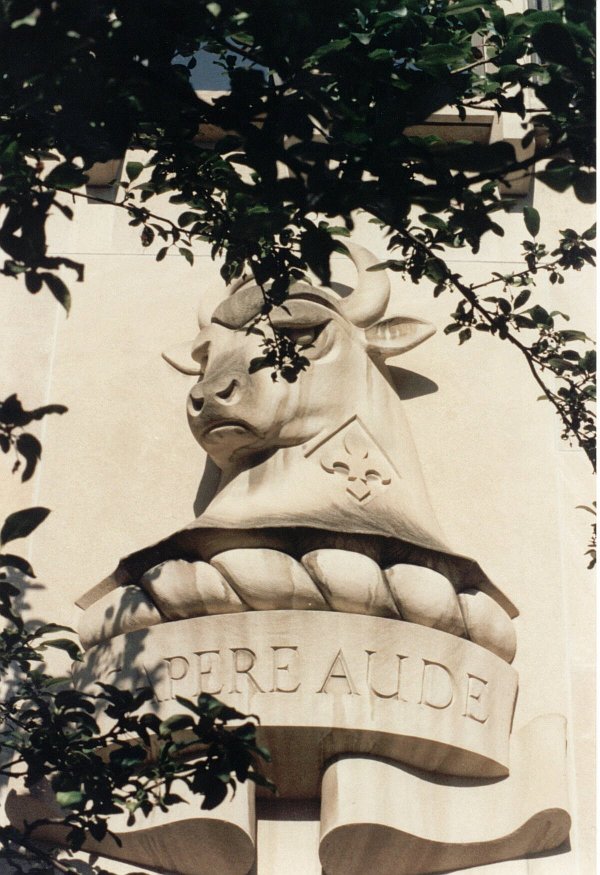 |
Figure 4 - Gate of Massey College (Photo, Jonathan Good) |
|
But stone carving does not have to be monochrome, as the next three examples will attest. The first (Figure 5) appears on the wall of the Fisher House men's residence of St. Michael's College and shows the arms of Saint John Fisher impaled with those of the Diocese of Rochester and the date 1535. Being outdoors, the paint is a little shabby, but it is nonetheless very impressive.
 |
Figure 5 - Fisher House (Photo, Jonathan Good) |
|
Another example of this genre is on the wall of More House residence, also at St Michael's College. This is in excellent condition, showing the arms of St. Thomas More, also with the date 1535, the year of his (and Fisher's) martyrdom.
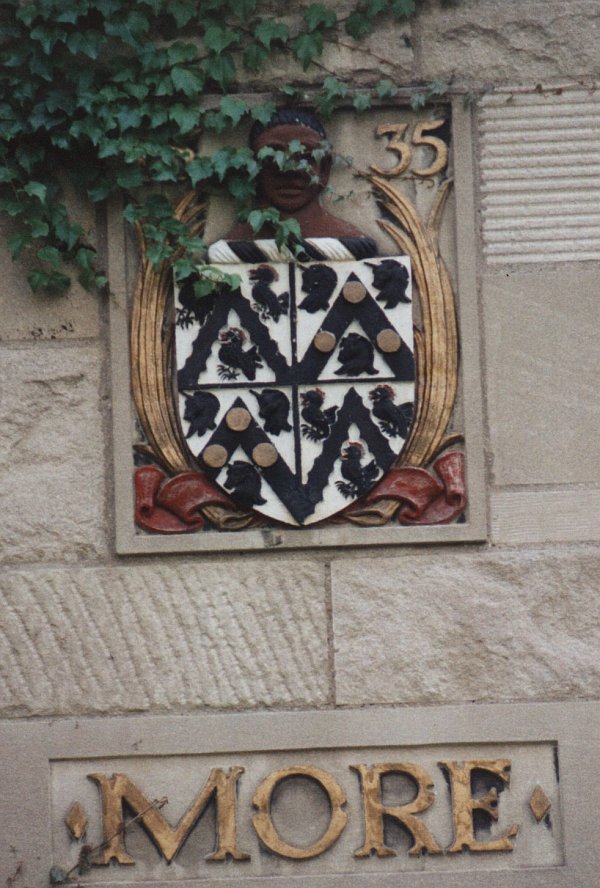 |
Figure 6 - More House (Photo, Jonathan Good) |
|
The third example of painted stone (a good deal brighter because of its indoor location) is of the arms of John Graves Simcoe, Governor of Upper Canada, in the foyer of Simcoe Hall, the administration building of the University of Toronto. The last three are by the noted Canadian heraldic artist, A. Scott Carter.
 |
Figure 7 - Simcoe Hall Foyer (Photo, Bruce Patterson) |
|
Another material used in architectural heraldry is of course bronze. A relatively modern painted bronze plaque of the college's arms can be found over the entrance to Wycliffe College on Hoskin Avenue. This has the advantage of ease of removal if the building were to be demolished, as so often happens in our age of disposability.
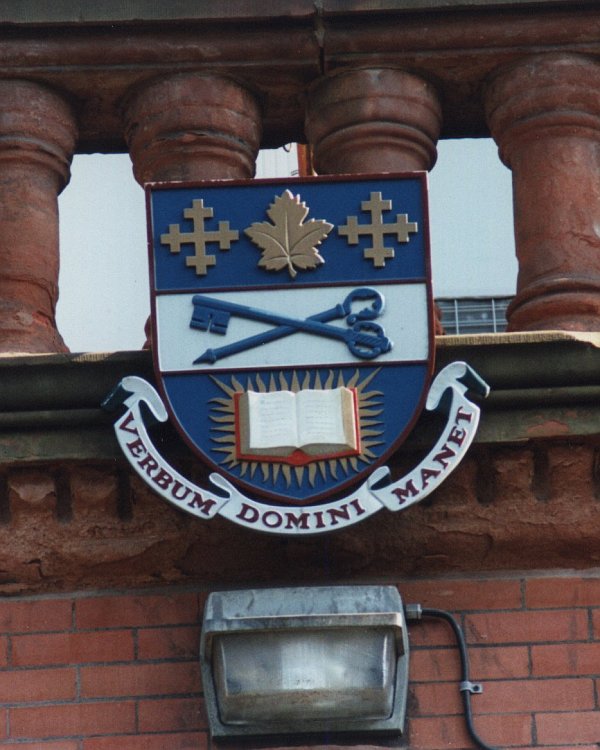 |
Figure 8 - Wycliffe College (Photo, Jonathan Good) |
|
Not all the armory used in the construction of buildings is on the outside and not all therefore needs to be of weather-resistant materials like stone or bronze. Wood provides a special quality to any art associated with it, as our last two examples demonstrate. These are both found decorating the panelling of the West Hall of University College. They were likely made for the opening of the college in 1857 and redone after the fire of 1890. The first shows the arms of Sir Edmund Walker Head, Bt., Governor General of the United Canadas from 1854 to 1861.
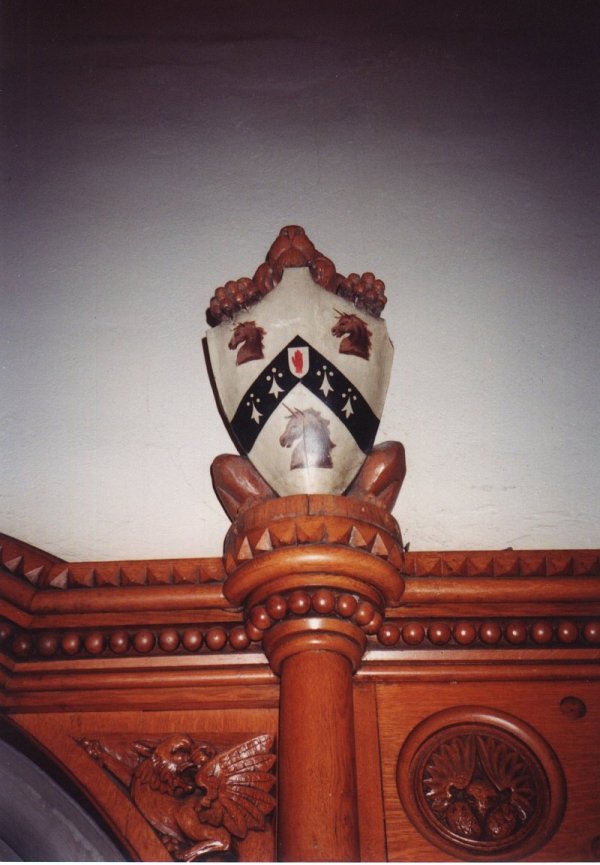 |
Figure 9 - West Hall, University College (Photo, Bruce Patterson) |
|
The second depicts the impaled arms of University College and the University of Toronto (see also figure 3). Both of these wooden shields are supported by a magnificent animal whose nature is not clear from the photograph. I believe the first may be a bear, the second a wolf. Perhaps one of our readers can enlighten us.
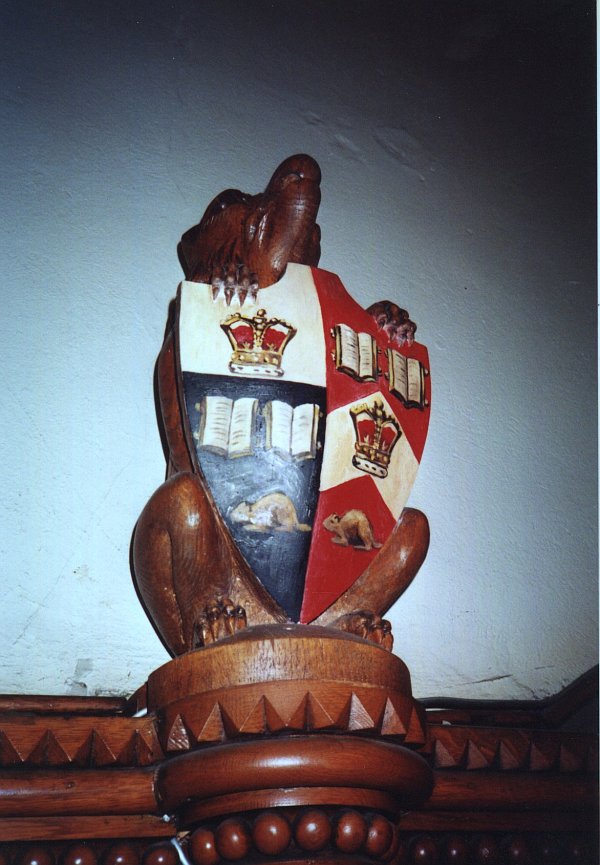 |
Figure 10 - West Hall, University College (Photo, Bruce Patterson) |
|
Canada has a great deal more architectural heraldry than most would suspect, as I hope these examples from Toronto will demonstrate. It is to be hoped that we will regard these as major elements of our historic and artistic heritage and ensure that we will not destroy them in our current frenzy to "improve" our wonderful old buildings. We would not destroy a Rubens or a Van Gogh. Why should we destroy a Scott Carter? It is hoped in the future to feature the architectural and monumental heraldry of other Canadian cities and photographs (preferably - but not necessarily - in electronic form) are solicited.
Kevin Greaves, Aug 2006
















